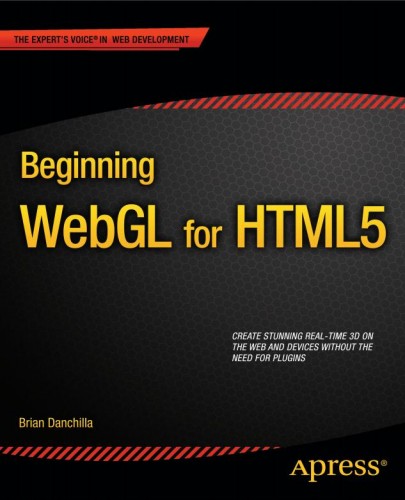Beginning WebGL for HTML5
 Год
Год: 2012
Автор: Brian Danchilla
Издательство: Apress
ISBN: 978-1-4302-3996-3
Серия: The Expert's Voice in Web Development
Язык: Английский
Формат: PDF/EPUB
Качество: Изначально компьютерное (eBook)
Интерактивное оглавление: Да
Количество страниц: 356
Описание:
Beginning WebGL for HTML5 gets you rapidly up to speed with WebGL, a powerful new graphics language within the browser. You'll render realistic scenes with advanced lighting models, shadows, blending and textures. You'll also use mathematics to model fractals and particle systems. Going beyond that,
Beginning WebGL for HTML5 presents advanced vertex and fragment shader usage for creating stunning, top-end results.
You'll benefit from using modern frameworks to rapidly develop complex scenes, and make use of many tools to help improve rendering performance and debugging.
Beginning WebGL for HTML5 builds your critical WebGL development skills while being enjoyable at each step of the way.
Quickly get up to speed with WebGL
Render realistic scenes
Work faster with frameworks
Improve rendering performance
What you’ll learnA scene setup and rendering refresher
Advanced GLSL usages
Rendering realistic scenes with lighting, blending, reflections, shadows and more
The current state of WebGL mobile support
Performance optimizations
Enhancing productivity by using existing frameworks and loading models
Who this book is forBeginning WebGL for HTML5 is for the graphics enthusiast who is ready to bring their skillset to the next level and create more realistic, beautiful scenes.
Beginning WebGL for HTML5 is a great choice for someone with existing OpenGL or Canvas 2D knowledge wanting to transition to WebGL. It is an excellent choice for those wanting to have high performance graphics coded in minimal time.
Chapter 1: Setting The Scene
Chapter 2: Shaders 101
Chapter 3: Textures and Lighting
Chapter 4: Increasing Realism
Chapter 5: Physics
Chapter 6: Fractals, Height Maps, and Particle Systems
Chapter 7: Three.js Framework
Chapter 8: Productivity Tools
Chapter 9: Debugging and Performance
Chapter 10: Effects, Tips and Tricks
Afterword: The Future of WebGL
Appendix A: Essential HTML5 and JavaScript
Appendix B: Graphics Refresher
Appendix C: WebGL Spec. Odds and Ends
Appendix D: Additional Resources
Index


